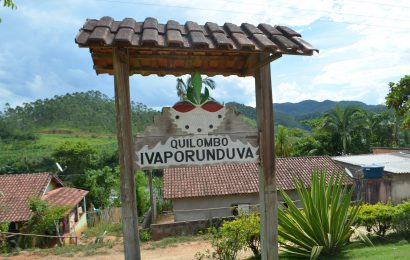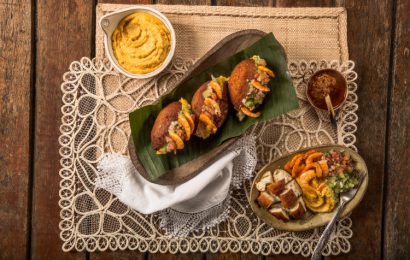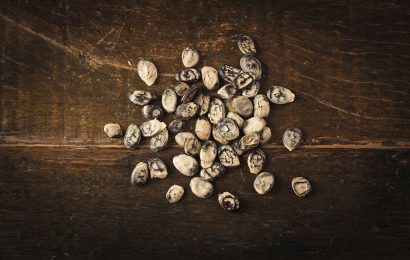Check the highlights of the meeting held by Iphan (institute responsible for the historical and cultural heritage) in partnership with Instituto Brasil a Gosto and other entities related to national gastronomy and culture.
“Patrimônio Alimentar: promovendo saberes e práticas” (Food Heritage: promoting knowledge and techniques), was an event held on October 18th and 19th by Iphan and supported by Instituto Brasil a Gosto, Instituto ATA, Associação Slow Food Brasil,Instituto Socioambiental, Centro Educacional FMU, Sesc São Paulo and other partners, to talk about safeguarding Brazilian food culture.
The first day took place at Nelson Carneiro auditorium, of FMU, located in the Liberdade neighbourhood, in São Paulo. The event was attended by authorities, academician and the holders of knowledge, who came from all over the country – acarajé baianas from Salvador, Bahia; members of SAT (Sistema Agrícola Tradicional – tradicional agriculture systems) from Vale do Ribeira Quilombos (Brazilian traditional rural communities whose members descend from former slaves) in São Paulo and indigenous groups from Rio Negro, in Amazonas state; as well as cheese producers from Minas Gerais. They represent four out of six food practices that are acknowledged by Iphan as Brazilian cultural heritage.
When we talk about cultural heritage, we are talking not only about an object or a technique in itself. Heritage is also the people who do it and on whom it relies to exist, resist and be preserved”, said Hermano Queiroz, director of Iphan’s immaterial heritage department. “We need to show their importance and increase their relevance, because they are the heritage. It is important to document all of this, it is the way for the knowledge to be continued and for our culture to be preserved”, added Estela Vitela, federal prosecutor acting at Iphan.
In this sense, it was clear during the event that simultaneous measures need to coexist. As an exemple, we can mention the series of actions that Instituto Brasil a Gosto developed during 2019 about quilombola cuisine #pelacozinhaquilombola. Among them there was an expedition, a forum and a new book (click here to learn more). “Brasil a Gosto has the Brazilian cuisine as a flag and a motto and is a huge promoter of our culture. That’s why I became ambassador of the Institute. Together, we are going deeper in the research I started more than 10 years ago about quilombo’s food”, declared Guga Rocha, a chef from Alagoas whose mother was born in União dos Palmares, a notorious quilombo area. “All this research is based on oral tradition, as it hasn’t been documented so far, which is one of the aims of our work. We have listed 460 recipes already, all gathered from conversations, relying on that emotional and primitive contact that is such a strong trait of the kitchen, he added.
On the following topics, you will find the highlights of each topic discussed at the event:
Quilombola culture
“How the safeguard, that came in 2014, changed our lives?” João da Mata, member of a quilombo at Vale do Ribeira, has no doubt: “at the beginning I thought that word was very hard to understand, but little by little I realize that it was the way to protect, to save what we do here and has been disappearing: celebrations, food, dances. And those things means health. I have never needed to stay in a hospital, I only use natural medicines and am almost 90 years old. This is the seed we need to save: life is having land to cultivate. And cultivating the land is life.”
“It is important to keep the quilombos where they are, in their own land, not only for us and for now, but for all of those who are yet to come. Nowadays, our kids and families want to leave, want to study at the university and they see the quilombo as something boring and with no perspective. How will it in 50 years? Will our culture still exist?” asked Leonila Pontes, also from Vale do Ribeira, whose great grandfather was from Nigeria and whose other grandfather was raised by indigenous people “I am 70 years old and I have always worked in the land. We know what and where to cultivate. We don’t need someone from an office to determine a schedule for it. Without small family farms there is no dinner. And the hoe tells me what to do. The places where I walk barefoot, most of the people wouldn’t walk even wearing shoes”, remembered the farmer, who is also a poet.
Indigenous people and the land
The Rio Negro agriculture system (SAT Rio Negro), in Amazonas state, was another subject discussed. Sandra Gomes Castro, from the indigenous group Baré – situated in Amazon’s Northwest, almost at the Brazilian border with Colômbia and Venezuela – is an important local leader and researcher that participated in the elaboration of the SAT Rio Negro Dossier. She listed important points raised by the safeguard, instituted in 2018: Maintenance of culture within the community in a very important period, when the arrival of processed foods has been very strong and affects the health and life in the tribes. After the safeguard, the food we produce started to be purchased by the government for school meals in the region. There was also the registration of 263 native species that were in danger of being forgotten, lost, or extinct. “The people of Rio Negro started to be proud of themselves”.
Adão Francisco, of the same ethnicity and director of the Federation of Indigenous Organizations of Rio Negro (FOIRN), highlighted another issue that is important to them: the territory. “We have our lands and life as indigenous people. It’s our science! But we need the security of the demarcated land, we cannot run the risk of being invaded all the time ”.
The artisanal cheese
“The cheese has the word ‘artisanal’ just because it needs the artisan: he is the one who feels how the milk is on a determined day: fatter, warmer… and how this affects the cheesemaking. Each day is different, so every cheese is different. And this is what makes the products unique. Each producer has its own characteristics. The industry doesn’t understand this and wants to standardize everything”, said Luciano Carvalho, Canastra cheese producer in the city of Medeiros, in Minas Gerais.
Alexandre Honorato, from Araxá, one of the first producers of raw milk’s cheese in Minas Gerais, added: “What they don’t understand is that cheese is food, not just a product. Even if I use a neighbour “pingo” (the starter culture, an essential ingredient in cheesemaking) my result will not be the same as his. It can be similar on the first and second days, but thereafter it will be different because the starter is in another environment, with the bacterias from my production. It is not possible to stop it and lock it, it’s alive. After the safeguard (in 2008) and the creation of the Aprocan stamp (click here to learn more), I see that the best to do is to reach a consensus among producers, industry and the legislation, since we keep being awarded at international competitions, especially in France, that is recognized for its excellence in cheesemaking. This proves that we have quality products. This year we won more awards than the French and Swiss cheeses combined (click here to learn more). But we still face hard times to sell our cheese in Brazil and the country keeps importing European cheeses
The Acarajé Baianas
Is every acarajé seller part of our cultural heritage? “To be considered an Acarajé Baiana, it’s not just about sitting by the tray, or selling the preparation. It is ancestry, religion, respect: for the craft she serves, for the food, for the culture”,said Rosa Coutinho, representative of ABAM – National Association of Acarajé Baianas, Mingau, Receptivo and Similars.
“We can say that acarajé became popular when slavery still existed. And it was Brazil’s first street food, and one of the first means of income for women. This has more than 300 years of history ”, celebrated Eleonora Alves, known as Doné, a real and symbolic Acarajé Baiana.
“For all these reasons, ABAM needed the safeguard so badly, which was achieved in 2005. Now, our biggest challenge is to reach difficult places for us, like São Paulo – the state and the city. We cannot understand how these places, which have immigration as a strong cultural reference, do not see the Acarajé Baiana. If it is a recognized heritage, they could be on the street selling your product, generating income and preserving our culture and eating habits. But, here (in São Paulo), this is very difficult. Could it be that the only way to continue doing acarajé is by civil disobedience? And I won’t even go too far on the issue of ‘gourmet acarajé’, business and restaurants that are doing this, which in my opinion are just commercial establishments, without any responsibility with our culture ”, argued Rita Maria de Ventura dos Santos, from ABAM.
Heritage on the table
For the coffee break between the debates, our chef Max Jaques produced, with the help of students from the FMU gastronomy course, three very Brazilian recipes with ingredients brought by the knowledge holders: banana bread with rapadura from Vale do Vale Ribeira and Brazil nuts; bread stuffed with Araxá and Canastra cheeses and Baniwa pepper; and tapioca pudding with rapadura and pumpkin syrup, from the quilombola communities.
Public interaction
In an attempt of talking directly with the population, the second day of the event took place in a space known for the democratization of culture: Sesc, more specifically, the Vila Mariana branch, in the capital’s South Zone. In the main hall there was a producers fair, as well as conversation circles and workshops with the holders. Sandra Gomes Castro, for example, taught how to prepare quinhapira, a typical recipe from the upper Rio Negro, with fish in a fine broth of peppers that is consumed all day long there (see how to prepare it here). She was assisted by our chef, Max, who also supported a cheese tasting from Minas, accompanied by dulce de leche and coffee. Quilombolas from Vale do Ribeira were able to show some of their recipes, such as beiju made from manioc dough and green papaya salad, with the help of chef Claudia Mattos, from Espaço Zym, a member of the Slow Food Brasil Association.
At the fair, the Acaraje Baianas were able to make their acarajé, the indigenous people sold baskets, flour and peppers; the ones from Minas Gerais traded cheeses and the quilombolas, sold products derived from bananas, such as chips and flour. And the best news: a lot of things ran out in the middle of the day, almost no one was left with products to take back home, and the public could go home with well-stocked shopping bags.



